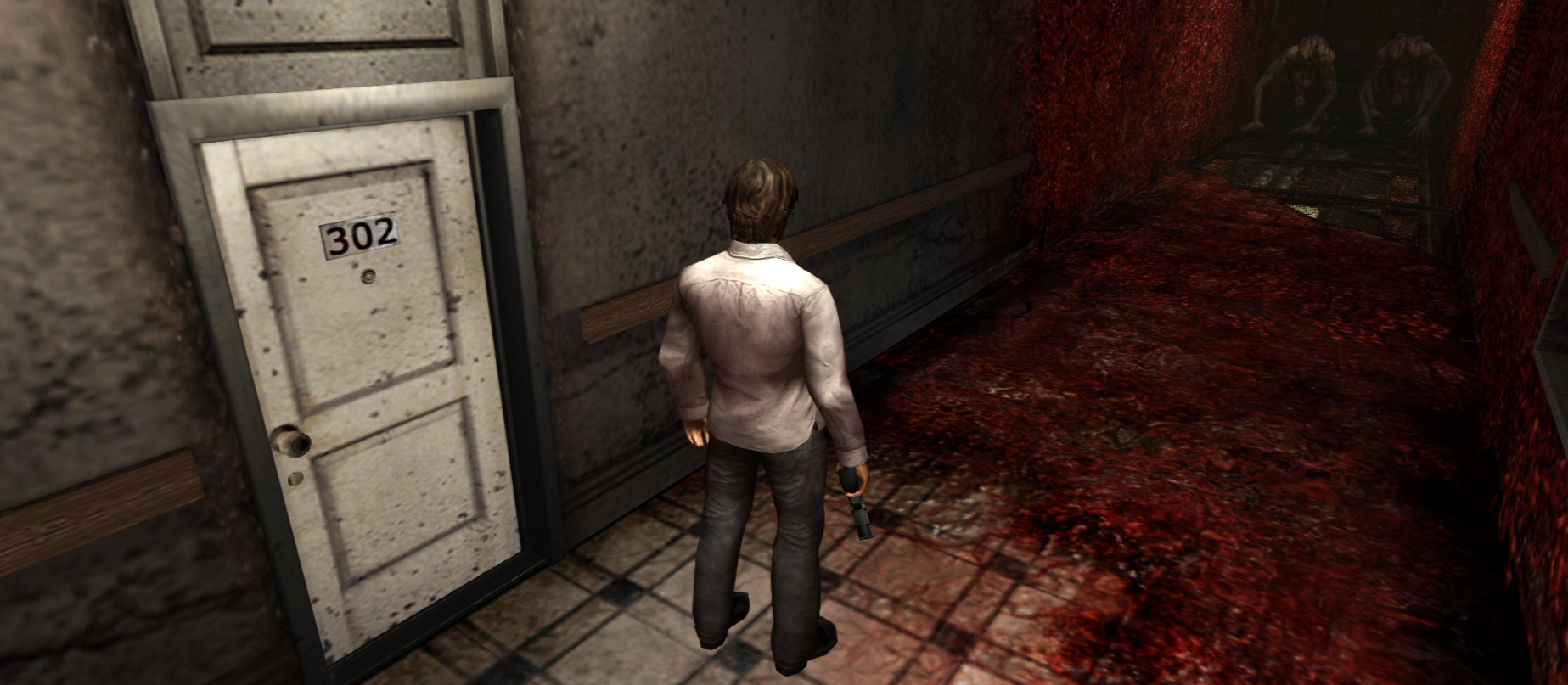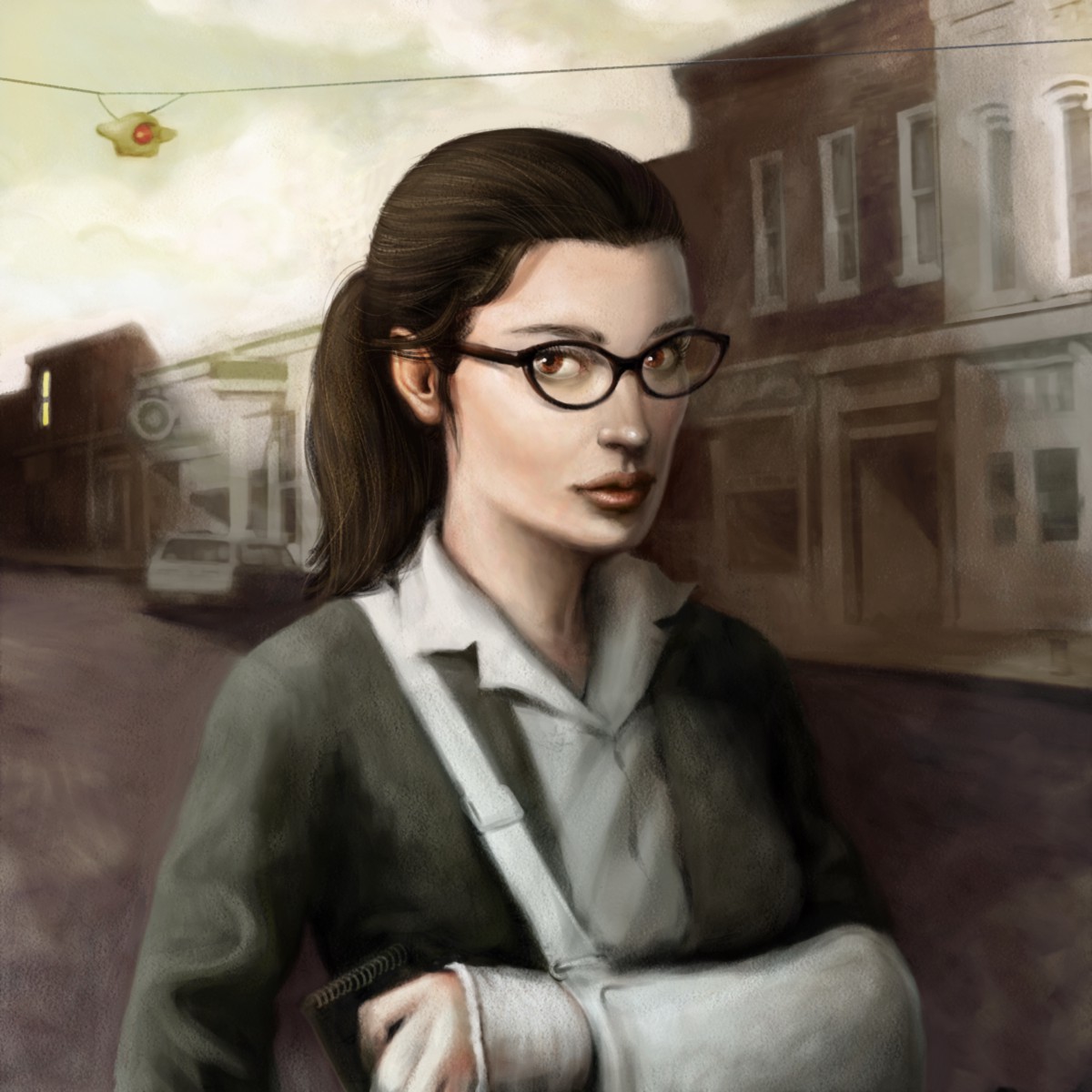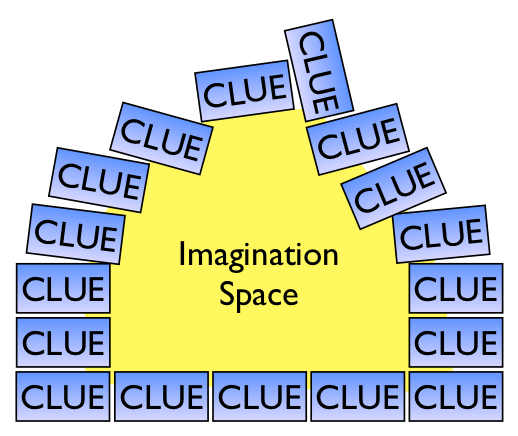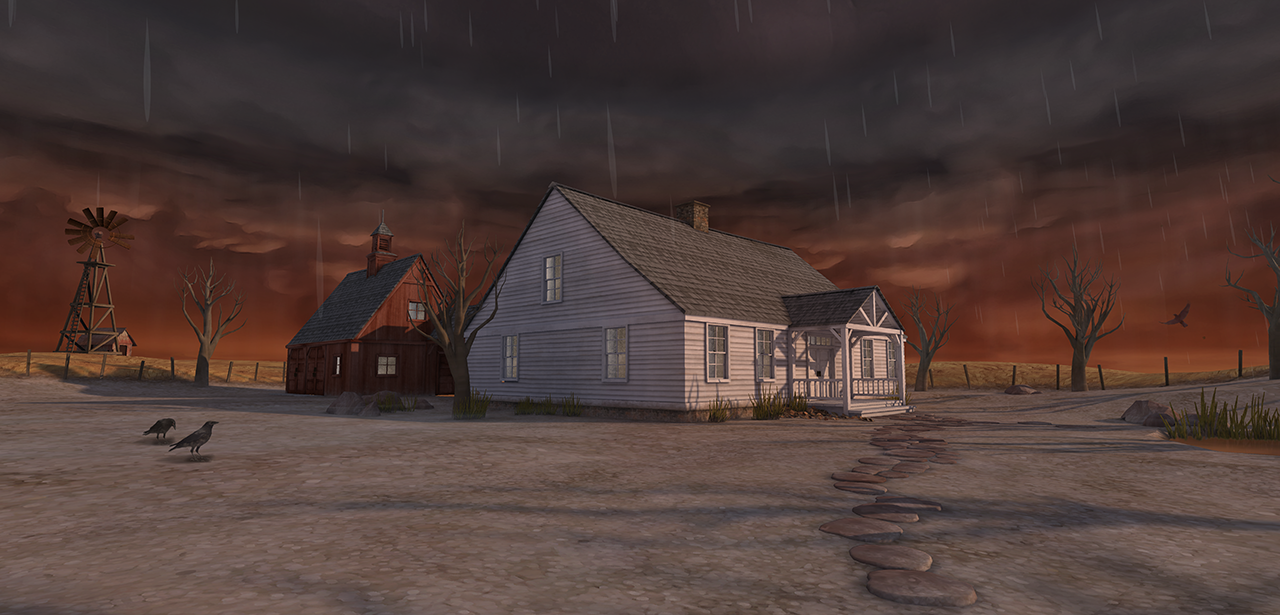How to create tension in horror games. Part two
Suspense and tension are created in games with great difficulty. To scare the player and keep him at bay all the time, you need to work hard, fully influencing his feelings. The best horror games put the players off balance by the main game mechanics and then fix their attention on the scary story. You need to think through every mechanic, every artistic decision, so that the user remains focused on the game and at the same time feels his own vulnerability.

Part One - by reference.
The player must be afraid for his character, respectively, you need a character that is easy to endanger. The design of the protagonist affects the other gameplay systems, in particular, the combat system and the design of opponents. In order for a strong character to be threatened, his opponents must be even stronger. Do you want to make a horror game about a first-class thug who can jump out of windows and throw grenades through holes that have just been punched in the floor and walls? Great, but then you need to invent such powerful and terrible enemies, from which even your ninja shooter will shrink. However, you can injure your character or take away his weapon so that opponents in the game do not look too monstrous. By the way, the tendency of Resident Evil developers to police officers is directly related to their passion for huge monsters with tentacles.
')
On the other hand, a weakened or “normal” hero is much easier to scare. In the games of the Silent Hill series, the main characters are ordinary people. And all because they are less likely to survive all the upcoming troubles. In addition, firearms are rarely seen in the game - more often the character is forced to arm with improvised means, such as a pipe or a hammer, which only aggravates his position. In Amnesia: The Dark Descent, the main character is an archaeologist with an oil lamp in his hands: hardly a suitable weapon against absolute evil. In the game Fatal Frame, as in the Clock Tower, the story unfolds around a schoolgirl, alone in a terrible place. The "star" composition of the game Siren - simple teachers, students and other ordinary people. The combat system and the design of the enemies in all the games mentioned are determined by the nature of the character itself.

It was important for us that the protagonist of Dead Secret by the name of Patricia was strong and self-sufficient. Therefore, in order to weaken her, without diminishing her mind, merits and belligerent nature, we put a plaster on her arm.
Scrimer is a sudden event designed to shock the viewer. Many players hate screamers because they are hard to avoid. They scare even when you expect them to appear. Screamers are very effective in their work, but they live a short time and quickly tire. Many players consider screamers to be low-grade mechanics and an indicator of bad taste in games that are incapable of evoking fear in more sophisticated ways.
I believe that screamers can be a great tool when used properly. They release the accumulated stress. This is the easiest way to cause a player to shock that does not pass immediately. They carry a simple thought: be careful and do not be distracted! Subsequently, this concentration will help the player become more receptive to more sophisticated methods of influence.
Screamers are needed not just to scare a player, but to make him afraid of the next screamer. Under ideal conditions, the following should not be at all. Too many screamers will dissipate the tension that you have accumulated with such difficulty. If they are too few, the user may lose interest before the game hooks him. One or two screamers in the beginning will be enough to keep the player on the alert until the very end.

An excellent example of such a solution is the attack of zombie dogs in Resident Evil. They jump out of the window just a few minutes after the start of the game, taking the player off guard. For him, this situation will be a good lesson: from now on, he understands that the world around him is not static and unpleasant surprises can lie in wait everywhere. But even better this situation was beaten in Resident Evil Remake. By the time the game was released, everyone was already aware of the trap with zombie dogs and were awaiting their appearance. But the developers went to the trick and removed the zombie dogs from Remake. You are waiting for their appearance and, passing by the window, you see how the glass is slightly cracked, but the dogs never jump out. Due to this, the developers managed to preserve the novelty and effectiveness of this trick. Their new message was: “We made changes, and you will not know what they will be until you get caught.” This is a very smart way to constantly keep players on their toes, which we initially talked about.
Of course, I will not talk about what we prepared for Dead Secret players to avoid spoilers.
Leave space in narration, level design and game mechanics for the flight of fantasy players. Give them hints and clues, but refrain from explaining everything. You will see that this is not just a good narrative tactic, but also an effective way to focus the player’s attention on the contextual way of thinking. If a player is busy calculating who could kill Professor Plumb in a greenhouse, he most likely will have no time to build a truth table for your game.

Imagination space - Space for imagination
Clue - Tip
Negative space also creates an opportunity for replay, alternate decoupling, clandestine accomplishments and other all kinds of restraint systems.
As soon as the player has moved to the contextual way of thinking, it is possible to continue to increase the tension in the game due to the methods of violation of perception. Usually one-time short-term changes in the rules of the game, rather weakly perceptible so that the player is not completely sure that something is happening, act as such techniques. When properly executed, the perceptual disturbance techniques are deeply disturbing, as they cast doubt on the reliability and authenticity of the user's interaction with the game, even using the basic interface.
An example of the use of such techniques is the game Eternal Darkness, which applies the incredible effects of the destruction of the so-called "fourth wall". There are many such effects, and they look very impressive (at least for the first time). But many games use more subtle variations of the same idea. For example, in the game Echo Night: Beyond there is a room where the player walks a little slower than usual. This is a pretty clever trick; it makes staying in this room more depressing. In Silent Hill 4, when a player approaches the door, the picture in the third-person camera begins to stretch out, which inspires a premonition of danger lurking behind the door. The game Condemned changes the location of items when you turn away, and in Fatal Frame 4, when you open inventory, animated pop-ups are sometimes used.
Methods of perception disorder work most effectively with infrequent use. As is the case with screamers, they force the player to remain focused and watchful. It is equally important to introduce an element of chance so that such events do not always occur. They should look natural and organic, as if they could happen at any point in the game. And while some players may miss your frightening trick, those she meets will have an impressive experience.
In order to achieve a similar effect of perceptual disturbances in the game Dead Secret, we decided to make the reflections in the mirrors slightly implausible. Then we made sure that the mirrors were hung around the house, in which the plot unfolds.
It is difficult to overestimate the importance of sound in horror games. The implementation of many of the patterns described above is possible due to the sound alone, and an experienced sound producer can add gloom and mystery even to the most boring place in the game. Let us leave the discussion of the specifics of creating sound design outside of this article, noting only that sound and music are your primary means of emotional communication. The sound sets the mood of your game and causes an emotional response to it. From this point of view, sound is much more important for horror games than even art and graphics.

In Dead Secret, we created for each room a separate soundtrack, including unique noise backgrounds, echo parameters, and footsteps, not to mention the special sound of the environment for each place. My goal was to create a special sound motive for each room, a kind of acoustic mark that the player will recognize each time he visits the room. Also, depending on the room, we additionally used music and abstract sounds to force or reduce tension. We noticed that booming and bass audio tracks are better suited for our purposes than tracks with high frequencies, and that metallic sounds can significantly increase the voltage. Finally, we localized our soundtrack in the game space using the free Oculus Audio SDK.
Although we have put a lot of effort into making Dead Secret a terrible game, we cannot predict what feedback it will bring to the users. It is difficult to say for sure how the various mechanics of your game will affect an unbiased player. In our case, it turned out that Dead Secret came out much worse than I thought. I underestimated the true power of some small additions that we made at the end of the development to complement the impression of the game. A horror game gives you a holistic experience, and although it is sometimes difficult to take on any of the mechanics of your game and say with certainty that it creates tension, but the total effect of all the mechanics may surprise you.
Creating horror games is not easy, but the pleasure of the work process pays for all the attendant difficulties. This is an opportunity to carry on a dialogue with your audience that otherwise would not have been possible.

Part One - by reference.
Character design
The player must be afraid for his character, respectively, you need a character that is easy to endanger. The design of the protagonist affects the other gameplay systems, in particular, the combat system and the design of opponents. In order for a strong character to be threatened, his opponents must be even stronger. Do you want to make a horror game about a first-class thug who can jump out of windows and throw grenades through holes that have just been punched in the floor and walls? Great, but then you need to invent such powerful and terrible enemies, from which even your ninja shooter will shrink. However, you can injure your character or take away his weapon so that opponents in the game do not look too monstrous. By the way, the tendency of Resident Evil developers to police officers is directly related to their passion for huge monsters with tentacles.
')
On the other hand, a weakened or “normal” hero is much easier to scare. In the games of the Silent Hill series, the main characters are ordinary people. And all because they are less likely to survive all the upcoming troubles. In addition, firearms are rarely seen in the game - more often the character is forced to arm with improvised means, such as a pipe or a hammer, which only aggravates his position. In Amnesia: The Dark Descent, the main character is an archaeologist with an oil lamp in his hands: hardly a suitable weapon against absolute evil. In the game Fatal Frame, as in the Clock Tower, the story unfolds around a schoolgirl, alone in a terrible place. The "star" composition of the game Siren - simple teachers, students and other ordinary people. The combat system and the design of the enemies in all the games mentioned are determined by the nature of the character itself.

It was important for us that the protagonist of Dead Secret by the name of Patricia was strong and self-sufficient. Therefore, in order to weaken her, without diminishing her mind, merits and belligerent nature, we put a plaster on her arm.
Screamers
Scrimer is a sudden event designed to shock the viewer. Many players hate screamers because they are hard to avoid. They scare even when you expect them to appear. Screamers are very effective in their work, but they live a short time and quickly tire. Many players consider screamers to be low-grade mechanics and an indicator of bad taste in games that are incapable of evoking fear in more sophisticated ways.
I believe that screamers can be a great tool when used properly. They release the accumulated stress. This is the easiest way to cause a player to shock that does not pass immediately. They carry a simple thought: be careful and do not be distracted! Subsequently, this concentration will help the player become more receptive to more sophisticated methods of influence.
Screamers are needed not just to scare a player, but to make him afraid of the next screamer. Under ideal conditions, the following should not be at all. Too many screamers will dissipate the tension that you have accumulated with such difficulty. If they are too few, the user may lose interest before the game hooks him. One or two screamers in the beginning will be enough to keep the player on the alert until the very end.

An excellent example of such a solution is the attack of zombie dogs in Resident Evil. They jump out of the window just a few minutes after the start of the game, taking the player off guard. For him, this situation will be a good lesson: from now on, he understands that the world around him is not static and unpleasant surprises can lie in wait everywhere. But even better this situation was beaten in Resident Evil Remake. By the time the game was released, everyone was already aware of the trap with zombie dogs and were awaiting their appearance. But the developers went to the trick and removed the zombie dogs from Remake. You are waiting for their appearance and, passing by the window, you see how the glass is slightly cracked, but the dogs never jump out. Due to this, the developers managed to preserve the novelty and effectiveness of this trick. Their new message was: “We made changes, and you will not know what they will be until you get caught.” This is a very smart way to constantly keep players on their toes, which we initially talked about.
Of course, I will not talk about what we prepared for Dead Secret players to avoid spoilers.
Negative space
Leave space in narration, level design and game mechanics for the flight of fantasy players. Give them hints and clues, but refrain from explaining everything. You will see that this is not just a good narrative tactic, but also an effective way to focus the player’s attention on the contextual way of thinking. If a player is busy calculating who could kill Professor Plumb in a greenhouse, he most likely will have no time to build a truth table for your game.

Imagination space - Space for imagination
Clue - Tip
Negative space also creates an opportunity for replay, alternate decoupling, clandestine accomplishments and other all kinds of restraint systems.
Perception disorders
As soon as the player has moved to the contextual way of thinking, it is possible to continue to increase the tension in the game due to the methods of violation of perception. Usually one-time short-term changes in the rules of the game, rather weakly perceptible so that the player is not completely sure that something is happening, act as such techniques. When properly executed, the perceptual disturbance techniques are deeply disturbing, as they cast doubt on the reliability and authenticity of the user's interaction with the game, even using the basic interface.
An example of the use of such techniques is the game Eternal Darkness, which applies the incredible effects of the destruction of the so-called "fourth wall". There are many such effects, and they look very impressive (at least for the first time). But many games use more subtle variations of the same idea. For example, in the game Echo Night: Beyond there is a room where the player walks a little slower than usual. This is a pretty clever trick; it makes staying in this room more depressing. In Silent Hill 4, when a player approaches the door, the picture in the third-person camera begins to stretch out, which inspires a premonition of danger lurking behind the door. The game Condemned changes the location of items when you turn away, and in Fatal Frame 4, when you open inventory, animated pop-ups are sometimes used.
Methods of perception disorder work most effectively with infrequent use. As is the case with screamers, they force the player to remain focused and watchful. It is equally important to introduce an element of chance so that such events do not always occur. They should look natural and organic, as if they could happen at any point in the game. And while some players may miss your frightening trick, those she meets will have an impressive experience.
In order to achieve a similar effect of perceptual disturbances in the game Dead Secret, we decided to make the reflections in the mirrors slightly implausible. Then we made sure that the mirrors were hung around the house, in which the plot unfolds.
Sound accompaniment
It is difficult to overestimate the importance of sound in horror games. The implementation of many of the patterns described above is possible due to the sound alone, and an experienced sound producer can add gloom and mystery even to the most boring place in the game. Let us leave the discussion of the specifics of creating sound design outside of this article, noting only that sound and music are your primary means of emotional communication. The sound sets the mood of your game and causes an emotional response to it. From this point of view, sound is much more important for horror games than even art and graphics.

In Dead Secret, we created for each room a separate soundtrack, including unique noise backgrounds, echo parameters, and footsteps, not to mention the special sound of the environment for each place. My goal was to create a special sound motive for each room, a kind of acoustic mark that the player will recognize each time he visits the room. Also, depending on the room, we additionally used music and abstract sounds to force or reduce tension. We noticed that booming and bass audio tracks are better suited for our purposes than tracks with high frequencies, and that metallic sounds can significantly increase the voltage. Finally, we localized our soundtrack in the game space using the free Oculus Audio SDK.
Holistic experience
Although we have put a lot of effort into making Dead Secret a terrible game, we cannot predict what feedback it will bring to the users. It is difficult to say for sure how the various mechanics of your game will affect an unbiased player. In our case, it turned out that Dead Secret came out much worse than I thought. I underestimated the true power of some small additions that we made at the end of the development to complement the impression of the game. A horror game gives you a holistic experience, and although it is sometimes difficult to take on any of the mechanics of your game and say with certainty that it creates tension, but the total effect of all the mechanics may surprise you.
Creating horror games is not easy, but the pleasure of the work process pays for all the attendant difficulties. This is an opportunity to carry on a dialogue with your audience that otherwise would not have been possible.
Source: https://habr.com/ru/post/398449/
All Articles